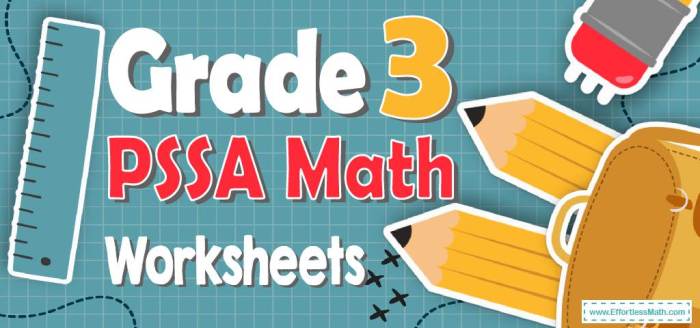The AP Human Geography Review Packet PDF is an invaluable resource for students preparing for the Advanced Placement Human Geography exam. This comprehensive guide provides a structured and thorough review of the key concepts, theories, and case studies covered on the exam, empowering students to achieve their academic goals.
The review packet is meticulously organized into logical sections, ensuring that students can easily navigate and prioritize their studies. It features real-world examples, visual aids, and practice questions to enhance understanding and retention.
Overview of AP Human Geography Review Packet PDF

The AP Human Geography Review Packet PDF is a comprehensive resource designed to help students prepare for the Advanced Placement (AP) Human Geography exam. It provides a structured and organized approach to reviewing the key concepts and topics covered in the course.
The packet is divided into units that correspond to the major themes of the AP Human Geography curriculum. Each unit includes a variety of resources, such as:
- Review notes that summarize the key concepts and theories
- Practice questions that allow students to test their understanding
- Maps and diagrams that help students visualize geographic concepts
- Case studies that provide real-world examples of the concepts being studied
Using the AP Human Geography Review Packet PDF has several benefits. It can help students:
- Identify areas where they need additional review
- Develop a deeper understanding of the key concepts
- Improve their test-taking skills
- Increase their confidence on exam day
Content Analysis
The review packet covers a wide range of topics that are essential for success on the AP Human Geography exam. These topics can be organized into several logical categories:
Population
- Population distribution and density
- Population growth and decline
- Population composition
- Population change and migration
Culture
- Culture and identity
- Cultural landscapes
- Cultural diffusion
- Cultural conflict and change
Political Geography
- Political systems
- Political boundaries
- Political power and conflict
- Political geography of the world
Economic Geography
- Economic systems
- Economic development
- Economic inequality
- Global economic patterns
Urban Geography
- Urbanization
- Urban structure and function
- Urban problems and solutions
- Urban geography of the world
Agricultural Geography
- Agricultural systems
- Agricultural land use
- Agricultural production
- Agricultural problems and solutions
Environmental Geography
- Environmental issues
- Environmental sustainability
- Environmental policy
- Environmental geography of the world
Geographic Information Systems (GIS)
- GIS concepts and applications
- GIS data and analysis
- GIS for decision-making
- GIS in the real world
Examples and Illustrations
Real-world examples and visual aids enhance the understanding of concepts in human geography. These tools provide a concrete foundation for abstract theories and principles.
Maps
Maps illustrate the spatial distribution of human activities and phenomena. For instance, a population density map of the world shows the uneven distribution of people across the globe, with high concentrations in urban areas and lower densities in rural regions.
Charts and Graphs
Charts and graphs present data visually, making it easier to identify trends and patterns. A line graph showing the growth of the world’s population over time highlights the exponential increase in human numbers and the potential challenges it poses.
Tables
Tables summarize key concepts and their examples. The following table lists some examples of human geography concepts and their real-world applications:
| Concept | Example |
|---|---|
| Population Density | New York City has a population density of 27,000 people per square mile, while rural Wyoming has a density of less than 1 person per square mile. |
| Urbanization | In 2023, over 55% of the world’s population lives in urban areas, with cities serving as hubs of economic activity and cultural exchange. |
| Economic Development | The Gross Domestic Product (GDP) per capita is a measure of a country’s economic well-being, with higher GDPs indicating greater economic development. |
| Cultural Diversity | The world’s cultural diversity is reflected in the variety of languages, religions, and customs practiced across different regions and societies. |
| Environmental Sustainability | Climate change is a global environmental issue that affects human populations and ecosystems worldwide, requiring international cooperation to mitigate its impacts. |
Methods and Procedures
Effective utilization of the review packet requires strategic approaches to maximize comprehension and retention. By adopting suitable methods and procedures, students can optimize their learning experience and enhance their preparation for the AP Human Geography exam.
To prioritize topics effectively, students should conduct a self-assessment to identify areas of strength and weakness. This can be achieved through practice tests, review of class notes, or consultation with the instructor. By focusing on areas that require additional attention, students can allocate their time and effort efficiently.
Active Learning and Retention
Active learning techniques promote deeper engagement with the material, fostering better understanding and long-term retention. Incorporating active learning strategies such as creating concept maps, engaging in discussions, or participating in simulations can enhance the learning process.
Spaced repetition is another effective method for improving retention. By reviewing the material at increasing intervals, students can strengthen their memory and recall information more easily.
Regular practice with exam-style questions can familiarize students with the format and structure of the AP Human Geography exam. This practice helps students develop time management skills, identify areas for improvement, and build confidence in their ability to succeed.
Assessment and Evaluation: Ap Human Geography Review Packet Pdf

Assessment and evaluation are crucial aspects of the AP Human Geography exam. The exam comprises various types of questions designed to assess students’ understanding of the course content.
The exam consists of three sections: multiple choice, short answer, and free response. The multiple-choice section tests students’ knowledge of key concepts and their ability to apply them to real-world scenarios. The short-answer section requires students to provide brief, concise responses to questions that focus on specific topics.
The free-response section consists of essay questions that assess students’ analytical and writing skills.
Practice Questions, Ap human geography review packet pdf
Practice questions and sample exams are valuable tools for students to assess their understanding of the course content and identify areas where they need improvement. Numerous practice resources are available online, including:
- The College Board’s AP Human Geography Practice Exam
- Khan Academy’s AP Human Geography Practice Questions
- Varsity Tutors’ AP Human Geography Practice Tests
Self-Evaluation
Self-evaluation is essential for students to track their progress and identify areas for improvement. Students should regularly review their practice questions and exams, identify their strengths and weaknesses, and focus their studies accordingly.
Students can also seek feedback from teachers or peers to gain insights into their understanding of the course content and writing skills.
FAQ Compilation
What is the purpose of the AP Human Geography Review Packet PDF?
The AP Human Geography Review Packet PDF is designed to provide a comprehensive review of the key concepts, theories, and case studies covered on the AP Human Geography exam, assisting students in their preparation.
How is the review packet structured?
The review packet is organized into logical sections, covering key topics such as population, culture, political geography, and economic geography. Each section includes real-world examples, visual aids, and practice questions.
What are the benefits of using the review packet?
The review packet provides students with a structured and efficient way to review the material, identify areas of strength and weakness, and develop effective study strategies.


